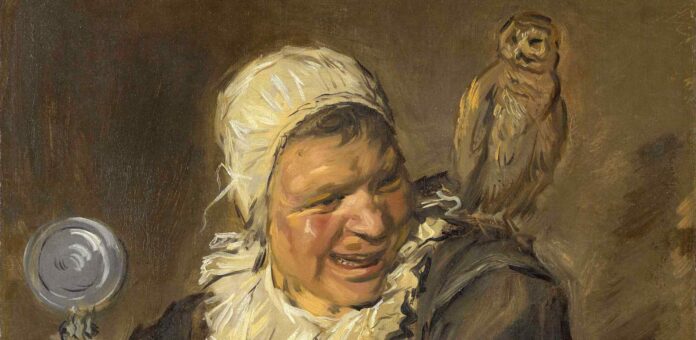In 2024, Berlin will celebrate one of the greatest portrait painters of all time: along with Rembrandt and Vermeer, Frans Hals ranks among the most outstanding Dutch painters of the 17th century. In addition to unconventional, expressive portraits of the Haarlem elite, he was the first artist in Holland to paint social outsiders as individuals in portrait format. With his extraordinarily relaxed and free style, this painter from Haarlem helped to inspire the Modernist painting like no other artist of his time. In cooperation with the National Gallery, London, and the Rijksmuseum, Amsterdam, the Gemäldegalerie is organizing a comprehensive monographic exhibition featuring some 75 works.
Today, Frans Hals (1582/83–1666) is considered one of the most important portraitists who ever lived. In addition to large-format portraits of civic militias and regents, he created numerous individual portraits of the citizenry of Haarlem, where he spent almost his entire life. In addition, he painted genre figures such as singers, entertainers, and fisher children as half-figures in close-up. The figures Hals depicted are characterized by their extraordinary liveliness and striking characterization. His sketch-like paintings, executed with loose, bold brushstrokes, influenced the painters of the late 19th century, with the Impressionists viewing Hals as one of their precursors.
Frans Hals and His Haarlem Contemporaries in Berlin
With nine works, the Berlin Gemäldegalerie holds one of the most extensive and high-calibre collections of paintings by Frans Hals in the world, including highlights such as the Malle Babbe, the Portrait of Catharina Hooft with Her Nurse, and the Singing Boy with Flute.
In addition to a high-quality selection of paintings by Hals, the exhibition in Berlin will also show works by his Haarlem contemporaries, thereby situating him as an exceptional figure within the context of his time. Among the 75 works on display are around 50 of the most important paintings by Frans Hals from over 20 public and private collections across Europe, the USA and Canada – including highlights such as Isaac Abrahamsz Massa and Beatrix van der Laen from the Rijksmuseum, the Young Man holding a Skull from the National Gallery in London, or The Lute Player from the Musée du Louvre in Paris. Also featured are works that have never before been shown in Germany, such as the monumental militia piece The Meagre Company, which is over four meters wide.
A Pioneer of Modernism
The unprecedented free style of painting that Hals employed for his portraits made him the most modern artist of his time. Instead of conventional poses, he reproduced the fleeting moment of a movement or expression. His masterful, virtuosic painting style makes his sitters appear alive, open, and approachable. Hals devoted himself to their individual characteristics without bias, displaying curiosity, wit and sympathy. Laughter or smiling is a key element of his compositions: in an unsurpassed way, he understood how to reproduce laughing figures with the utmost realism.
Frans Hals painted social outsiders with the same devotion he showed in his depictions of the upper class of the Dutch Republic, producing extraordinarily innovative genre paintings and life-size character studies. With these works, he brought unprecedented visibility to marginalized groups of society that had no place in the portraiture of the time.
Not only in this respect, but also because of his loose, virtuosic use of color and the spontaneity and immediacy of his depictions, Hals can be considered a pioneer of Modernism. At the end of the 19th century, his paintings became important sources of inspiration for Realists and Impressionists such as Max Liebermann, Wilhelm Leibl and Lovis Corinth. The Berlin exhibition will show works by these artists in the context of their great role model. The show will not only focus on Hals’s extraordinary oeuvre, but also on the far-reaching impact of his works on the development of European painting.
Collaboration
This collaborative exhibition will be on view at the National Gallery, London, from 30 September 2023 to 21 January 2024; at the Rijksmuseum, Amsterdam, from 16 February to 9 June 2024; and at the Gemäldegalerie in Berlin from 12 July to 3 November 2024.
Curators
The Berlin exhibition is curated by Katja Kleinert, curator of 17th-century Dutch and Flemish painting, and Erik Eising, assistant curator at the Gemäldegalerie. It is supported by the Fontana Stiftung, the Ernst von Siemens Kunststiftung and the Kaiser Friedrich Museumsverein.
Catalogue
A richly illustrated catalogue will accompany the exhibition.
Media partners: ARTE, Der Tagesspiegel, Die Zeit Weltkunst, Klassik Radio, Monopol, tipBerlin
The exhibtion is supported by the Kuratorium Preußischer Kulturbesitz, the Fontana Stiftung, the Kaiser Friedrich Museumsverein und the Ernst von Siemens Kunststiftung.
A special exhibition of the Gemäldegalerie – Staatliche Museen zu Berlin, the National Gallery, London, and the Rijksmuseum, Amsterdam, in collaboration with the Frans Hals Museum, Haarlem
Source : Museen zu Berlin






